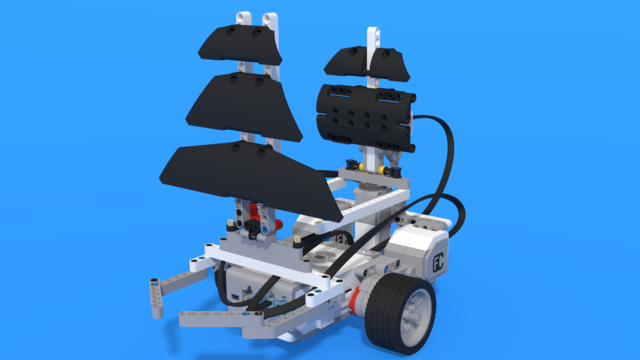We often use the rotation sensor without even realizing it. This sensor performs a very important fucntion in our robots and now we will see what it is.

To access the full video please subscribe to FLLCasts.com
- #1107
- 07 Jan 2019
- LEGO MINDSTORMS, LEGO MINDSTORMS EV3
- EV3-G, Classes with students, Programming, EV3, Sensors, Rotation Sensor
Have you noticed that when we command the robot to stop a motor, the latter not only stops moving but also finds it difficult to rotate. Test that by making a program with which you can stop the motor indefinitely (in a loop). Download your program to your robot, start it and then try to rotate the motor. Stop the program and try to rotate the motor again. It is much easier now, isn’t it?
This is all thanks to the rotation sensor which “feels” when the motor starts rotating and tells the robot to rotate it in the opposite direction.
Courses and lessons with this Tutorial
This Tutorial is used in the following courses and lessons

Level D1. "Animals". Robotics with LEGO
This is the seventh level of the Robotics with LEGO curriculum for students in third or fourth grade.
In this level students focus on the rotational sensor that is part of every motor in the robotics set.
Robot constructions imitate animals and their behavior. Students create programs that check whether the robot's claws or pecks have successfully caught an object. That sensor in the motors allows the robots to go back in their lairs even after the use of unlimited movement.
- 23
- 0:00
- 102

Lesson 1 - Clam
Introduction
In this lesson we will introduce another sensor. This sensor is very interesting as we have already used it many times without even realizing it. The robot we are going to build today resembles a clam. Have you ever seen clams? Have you seen live clams or only cooked ones? Or have you only seen shells?

- 7
- 4
- 15
- 3d_rotation 1

Robotics with LEGO - Level 2.5 - Maritime Journey
The fourth level of the Robotics with LEGO curriculum for students from fifth to twelfth grades.
In this level students focus on the rotational sensor that is part of every motor in the robotics set. Students also learn to use the fourth sensor in the robotics set - the gyro sensor.
First few robot constructions imitate sea-animals and their behavior. Students create programs that check whether the robot's claws or pecks have successfully caught an object. That sensor in the motors allows the robots to go back in their lairs even after the use of unlimited movement. The rest of the robots are modeled after boats, yachts, and ships. With the help of the gyro sensor, students can set a course for their robots to a given angle and can detect deviations from the course. In open seas, there may be sea-monsters and the robots are being programmed to detect a sudden change in acceleration with the help of the said sensor.
- 42
- 3:52
- 133
